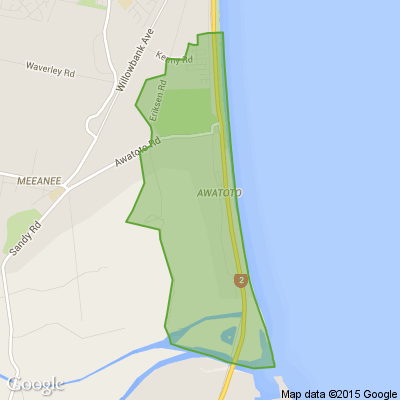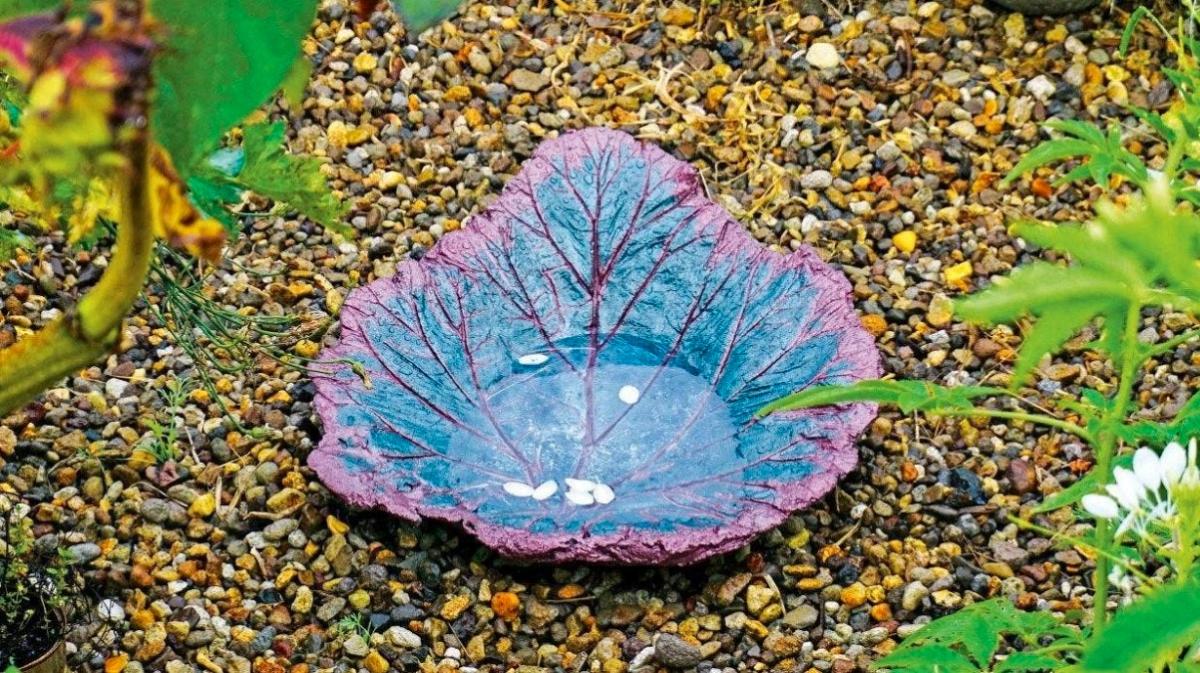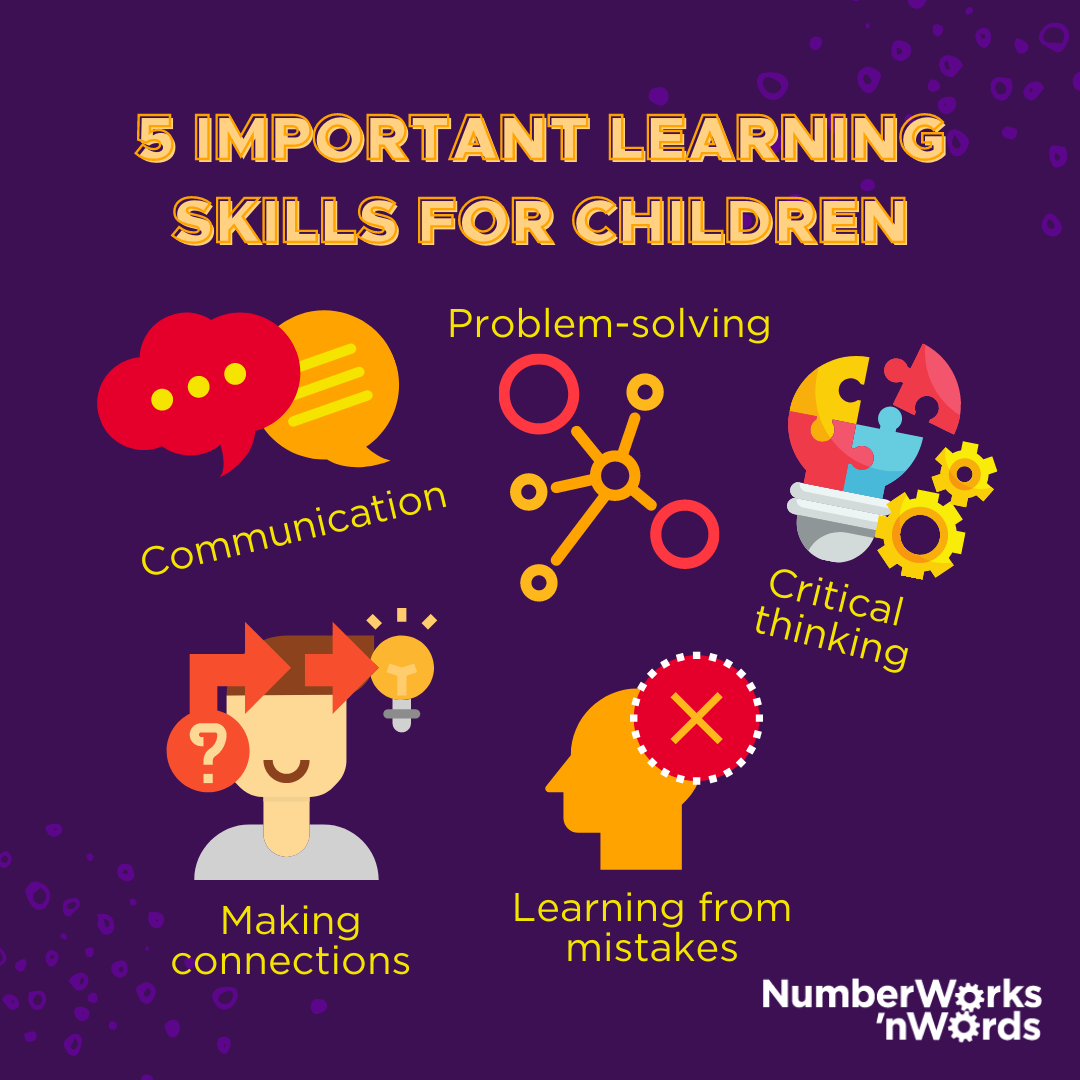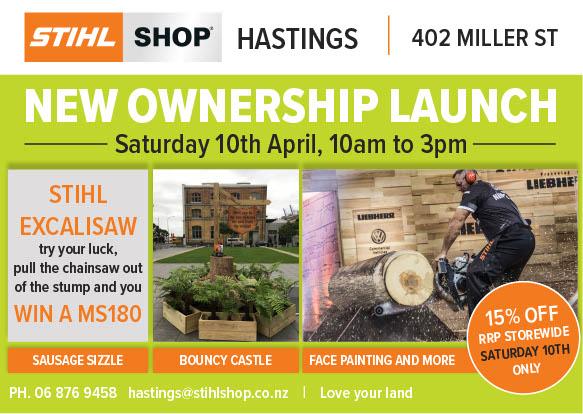
Know what’s happening
Access the private noticeboard for verified neighbours near you. Keep informed about any suspicious activity, send urgent updates to your neighbours when required and discuss emergency planning.
Get to know your neighbours
Browse the directory and start getting to know your neighbours. Don’t want to post to the whole neighbourhood? Send a private message.
Buy, sell and give away
Want to declutter your garage? Buy some used household items? Give away some garden stuff? Become a verified neighbour to browse and post items for sale. Trading is simple when everyone lives nearby.


Wondering about something in your neighbourhood?
Whether it's a new building going up or a strange noise you keep hearing, ask your neighbours here.

Thank you for using Neighbourly
You may receive an email confirmation for any offer you selected. The associated companies will contact you directly to activate your requests.
Helen Neighbourly Lead from Napier South
There are two guys (early 20.'s) doing random door knocking, from 6.30pm . They have hi vis jackets on with a big white Red cross patch on the front. I have notified Red Cross head office, and they aren't doing any campaigning at present. I have also notified the police. They are wanting… View moreThere are two guys (early 20.'s) doing random door knocking, from 6.30pm . They have hi vis jackets on with a big white Red cross patch on the front. I have notified Red Cross head office, and they aren't doing any campaigning at present. I have also notified the police. They are wanting names for the "Campaign Pandemic" which they are starting next week. They will take your details and then return to get the money.
13 replies (Members only)
Mei Leng Wong Reporter from NZ Gardener & Get Growing
Yes you can! NZ Gardener's DIY guru Jacob Leaf shows you how.

Rupert from Clive
The Story
Many moons ago, I happened to speak to a member of the top management of a large manufacturing company. Our topic was something dubbed “standard working hours decrease with compensatory wage increase”, in other words, working less hours per week while maintaining the pay.
The … View moreThe Story
Many moons ago, I happened to speak to a member of the top management of a large manufacturing company. Our topic was something dubbed “standard working hours decrease with compensatory wage increase”, in other words, working less hours per week while maintaining the pay.
The intent by the people that had initiated it was to help decrease unemployment figures during challenging economic times by creating additional jobs. In theory, reducing the weekly hours worked by 19 people by 2 per person would create one new, fulltime job, thus equaling about 365 new jobs for just that one manufacturing company...
So, how many new staff got hired? Well, hardly anyone.
Employers unsuccessfully scouring the labour market for, say fitters or turners are unlikely to hire accountants or nurses instead.
Effectively having to pay more for those on board already calls for an equivalent prior to any additional hire.
Therefore, their approach was more along the line “How can we achieve current output with current staff in less time?”
The Consideration
Outbound activity, such as improving sales or developing new markets, didn't appear to provide the right answers.
Inbound activity, on the other hand, looked promising with productivity taking centre stage.
The two options here were
- increasing output while maintaining input, or
- maintaining output with decreased input.
Since the situation rather called for the latter, looking for bottlenecks and road blocks to eliminate waste was considered appropriate. Either way, the focus would be on internal activities.
The Key Question
Within the next 12 months, which corrective action would yield how much cost benefit?
The Assessment
Any assessment would ask for some data acquisition prior to making a decision, and productivity assessments are no different. This data can be acquired by combing through areas that are either within or associated to the business.
Skills
People hired for a particular job bring a certain skill set. Topping up and/or updating these skills might help boost performance and productivity.
Equipment
There is obviously an advantage in using the tools or machinery that are best suited for the job on hand. Note that best suited does not necessarily mean the latest stuff.
Process
Any business activity should follow a process that could be tried, tested and reviewed regularly to identify opportunities for improvement. Even seemingly tiny things may have an impact. An airline decided to remove one olive from a salad served inflight. No one even noticed but it saved them about $40k per year.
Outsourcing
In average, about 30 production hours are required per one car at the original manufacturer. This is feasible due to components such as dashboards being pre-fabricated elsewhere and delivered on time straight to the assembly line.
Automation
An array of robots to weld or spray car bodies is a proven way to keep quality high and manufacturing cost steady.
Logistics
Components are supplied in time and to the right location on the premises, to save on cost for stock-keeping and internal transport. In addition, components might not incur procurement cost until delivered and accepted.
Communication
Effective communication has to happen from sourcing relevant materials to finished goods leaving the premises. While identifying bottlenecks and realising cost savings might be a challenge, it might be well worth the while.
Obviously, there are many more areas to potentially delve into...
Technology
Model range
Process design
Standardisation
Labelling
Quoting
Handling
Materials procurement
Wastage of raw materials
Asset maintenance
Accounting
...
One thing all these areas have in common: On your productivity gains journey, you want to ensure you don't pay Peter by robbing Paul. In other words, savings in one area are not really effective if they incur expenses in another. Therefore, it is good practice to look at neighbouring areas instead of assessing just one in isolation. This will help not losing sight of the big picture as well as with determining the most auspicious corrective action(s).
It is also worth noting that you can go on your productivity journey virtually anywhere. While assessing some remote manufacturing site might prove beneficial, looking at the more immediate administration site may also yield positive results.
The How-To
Questions to help getting started include
What would be the most promising area to get started with?
What would my goal be with respect to cost savings?
What particular activities are carried out in this area ?
How is an activity synchronised with a preceding or consecutive activity?
What makes an activity vital to the area's purpose or projected goal?
How can a vital activity be optimised or streamlined?
How big would the savings be?
How can a non-vital activity be made redundant? If you can't find any – look harder.
How much could be saved by doing that?
What would be the upstream/downstream effects of seizing it?
Please note that
1) “activity” can also mean something that happened in the past, is now static but still has an impact (see the olive example above),
2) “non-vital” is a property that is present but might not be required.
So, how many areas are too many, or not enough? How many activities can one handle? How many topics (or key factors) do I need to consider?
There is no one-number-fits-all answer to these questions.
From experience, starting with up to 3 areas in total when hunting for productivity gains will generally prove satisfactory, without being too overwhelming.
For example, assess one clearly defined area and include one upstream and one downstream area. Any area associated with significant cost has a good chance for notable gains.
Area size matters a lot, too.
For instance, if you have multiple lines for processing and packing cheese, start with one line only, or perhaps just with the packaging function of it. Thus, you're dealing with a relatively small and clearly arranged area, plus, have the additional benefits of getting quick results and gaining experience in the process.
As for timeframe, there is no one-number-fits-all answer either.
Assessing an area might take anything between a day or a month. Determining corrective activities, their implementation, and following up on their effectiveness might take anything from one week to six months.
When it comes to determining topics (or key factors) relevant to the chosen areas, they should relate to potential cost savings since this is what productivity gains is about.
Phrasing a question rather than a statement for a key factor will get you an answer you can base a corrective action on.
Corrective actions require resources, for scoping, planning, implementation, and review. Hence, ensure you adjust the number of key factors (and subsequent corrective actions) to suit your resources – or vice versa.
In the end, a number of 1 or 2 successfully implemented corrective actions is much more favourable than coming up with half a dozen that stretch your resources too thinly. There will be another opportunity, just a bit later, to implement another corrective action successfully.
Moreover, keep in mind that changes to one area might not show any effects there but affect upstream or downstream areas.
The Action
Making productivity gains is a long-term string of activities. After all, it is just a specific kind of continuous improvement, and, like the CI LOOP, it is regular round trips delivering new results each time you embark on that journey.
Productivity gains are made through particular actions based on and determined by facts, they need to be followed up and reviewed regularly and frequently.
While there are many different ways to go about productivity gains, the following pattern may serve as a rough guideline.
1) Choose 1 main and 2 neighbouring areas
2) Determine the topics to assess (at least 2, no more than 4)
3) Get the data. Try to translate everything into one specific unit (e.g. $$)
4) Create a table for areas and topics, enter the data and analyse it
5) Determine the highest potential saving (max. 1 per area), the corrective activity required, and potential gains (saving - cost)
6) Implement corrective action and monitor to check if gains are consistent and as expected
7) Tweak action(s) if required
Last But Not Least
Remember that making productivity gains is a team effort. Travelling as a party will be more inspiring than doing the journey alone.
In fact, talking and listening to people involved in the particular area will be mission-critical right from the start.
Hunting for productivity gains (and introducing new things in the process) might spell change, so some people who are directly involved or concerned might be a lot less enthusiastic about it. Therefore, support from people who are not directly involved might be mission-critical as well...
How is your productivity?
#waste #savings #productivity #gains #services #reliability #TPM #tmaholistics

Robin Hicks from FOCUS Learning Centre Napier
We see much being made of "Learning Skills" lately in our education system. Sadly we are also seeing huge drops in the standard of achievement. This is borne out in international testing, and I'm sure, from your own experiences with your children. I hear it all the time, especially … View moreWe see much being made of "Learning Skills" lately in our education system. Sadly we are also seeing huge drops in the standard of achievement. This is borne out in international testing, and I'm sure, from your own experiences with your children. I hear it all the time, especially since Lockdown... "my kids can't DO anything!" There is nothing wrong with these trendy new "skills", except they are totally ineffective if the children don't KNOW anything! And sadly that is what we see regularly. You simply can't "problem solve" or "think critically" or "make connections" if you don't have a sound basic knowledge base to build this higher thinking on. Even "Communication" is of questionable value if you don't have something of substance to say! (unless, of course, you want to be a politician! ;))It appears our school systems are developing a high proportion of children who cannot read or write correctly and effectively; physically and/or creatively, who struggle with basic maths, and who have little to no general knowledge. The research on the critical nature of all these in a child's cognitive development is overwhelming! but far too often the response these days seems to be "there is an app for that"! Hardly surprising kids lose confidence and show minimal resilience!
The answer, however, is very simple: TEACH them! Build a strong base of knowledge and skills! Letting young children "work it out for themselves", being "taught" by other students who really should be being enriched and challenged in their own learning, or simply plonking them in front of a screen continues to prove to be a dismal failure for all but a few.
Here at FOCUS we teach kids. Computers are OK for practice, but NOT for learning... we believe that is the job of TEACHERS.
Susan from Bluff Hill
Woman's black leather dance shoe - size W 10 1/2 (about 40)
Low heel, some wear but in good condition, $30
Mens leather dance shoe - size M 7 1/2
Good condition, leather soles $30
Both have taps which can be put back on, or use shoes as is for tango, foxtrot or dazzling footwork on … View moreWoman's black leather dance shoe - size W 10 1/2 (about 40)
Low heel, some wear but in good condition, $30
Mens leather dance shoe - size M 7 1/2
Good condition, leather soles $30
Both have taps which can be put back on, or use shoes as is for tango, foxtrot or dazzling footwork on stage!
Price: $30
As educators, it is important for us to instil useful learning skills in children so that they can grow, develop, and gain the necessary skills to succeed in life. At NumberWorks’nWords, we can help your child build and strengthen their learning skills through a tailored curriculum.
Check out … View moreAs educators, it is important for us to instil useful learning skills in children so that they can grow, develop, and gain the necessary skills to succeed in life. At NumberWorks’nWords, we can help your child build and strengthen their learning skills through a tailored curriculum.
Check out the full blog to explore 5 important learning skills for children! ?

The Team from Neighbourhood Support New Zealand
This issue includes news from our members across the country, safety tips + advice, updates from our partners and more.

Barbara from Taradale
Large Peace Lily in ceramic pot. Healthy plant needs a new home.
Price: $40

Come down and join us to celebrate. 10am-3pm Saturday 10th April
Local fire stations doing a sausage sizzle, free face painting and bouncy castle, hot coffee. Special Guest Jason Wynyard with his Hot Saw and STIHLS own EXCALISAW, will you be lucky enough to pull the saw from the stump??? In … View moreCome down and join us to celebrate. 10am-3pm Saturday 10th April
Local fire stations doing a sausage sizzle, free face painting and bouncy castle, hot coffee. Special Guest Jason Wynyard with his Hot Saw and STIHLS own EXCALISAW, will you be lucky enough to pull the saw from the stump??? In store promotion's One day only.

Mary-Ann from Maths tutoring
Mary-Ann, an experienced teacher, offers one to one maths tutoring for years 9 to 13.
Help with NCEA at all levels.
Ring or text 02040179124
Dana from Awatoto - Meeanee
Room available in owner's own home. Semi rural and quiet. Suit mature woman who is clean living and responsible. Refs required. Bond is also required.
Negotiable
Barbara from Taradale
We are having a garage sale as we are moving.
5 Chester Place, off Chester Street, Taradale
Household items, plants, clothes, shoes etc
Negotiable

Ben Keehan from FiSBO® NZ Ltd
FiSBO® has bridged the gap between a private sale and a traditional agent by providing full-service marketing to the point of inducement then our "Hybrid" sales platform helps the vendor to sell.
FiSBO® was created by Ben Keehan former real estate salesperson to automate the sales … View moreFiSBO® has bridged the gap between a private sale and a traditional agent by providing full-service marketing to the point of inducement then our "Hybrid" sales platform helps the vendor to sell.
FiSBO® was created by Ben Keehan former real estate salesperson to automate the sales process as most of what agents do is repetitive and very outdated. FiSBO® is the acronym For internet Sale By Owner.
We provide all the signs, photos, Virtual Tours, scripts, Assisted Open Homes, Inspections, TradeMe and Social Media posts. You can choose to prepay or postpay for your campaign from 1%+GST!
All campaigns start out with a price or by negotiation, then turn into an auction when there are multiple offers. Unlike a normal auction, all bids can include conditions with the dollar value of the BiD's displayed in the public listing (transparent) and buyers can change their bid or conditions at any time.
Once the vendor is satisfied they "Approve" one buyer's bid and the system sends all the detail to their solicitor to draft the agreement and keep all parties safe.
The latest campaign at 11a Windsor saw two buyers start bidding 1 day after the first open home then reaching their limits the vendor was satisfied by the third day. The solicitors had it all in hand and the house is now sold setting a record for the street and the vendors saved a considerable amount in fees compared to a traditional agent.
We want your business in 2021, so please call me to discuss your property campaign and find out how to FiSBO® your property

Pauline from Hospital Hill
Why would we spend $178 million but still end up with permanently chlorinated water when we could achieve exemption from mandatory chlorination if we pay extra? Do you want PERMANENTLY CHLORINATED WATER or CHLORINE FREE WATER for Napier? To vote: www.neighbourly.co.nz... The rough … View moreWhy would we spend $178 million but still end up with permanently chlorinated water when we could achieve exemption from mandatory chlorination if we pay extra? Do you want PERMANENTLY CHLORINATED WATER or CHLORINE FREE WATER for Napier? To vote: www.neighbourly.co.nz... The rough estimate to go fully chlorine free is an extra $50-$100million. Many Napier people suffer painful skin conditions they never had before the chlorine was added. Another part of the problem we’ve had since 2017 is that chlorine oxidizes with the manganese from some bore water and, instead of being flushed annually down the gutter, the chlorine-manganese sludge comes out the kitchen tap.

When you upgrade to fast and reliable fibre broadband, if you have a landline or alarm system you rely on, you’ll need to get them switched over as well. Between Chorus and your providers – we’ll take care of it all, with a heads-up from you!
Here’s what you need to know.
Learn more

 Loading…
Loading…
Are you sure? Deleting this message permanently removes it from the Neighbourly website.
 Loading…
Loading…

 Tender
Tender


 Marketed by Julie Smith
Marketed by Julie Smith

 By Negotiation
By Negotiation



 Marketed by Chloe King
Marketed by Chloe King

 By Negotiation
By Negotiation



 Marketed by Debbie White
Marketed by Debbie White

 By Negotiation
By Negotiation



 Marketed by Julie Smith
Marketed by Julie Smith

 By Negotiation
By Negotiation



 Marketed by Debbie White
Marketed by Debbie White

 By Negotiation
By Negotiation



 Marketed by Holly Hill
Marketed by Holly Hill
© Neighbourly 2024
